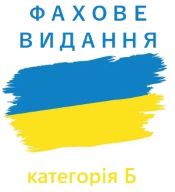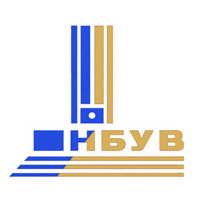Використання хіміко-термічної обробки для створення метастабільних модифікацій, що реалізують ефект самозміцнення при зношуванні сталі
DOI:
https://doi.org/10.31498/2225-6733.27.2013.30779Ключові слова:
метастабільний аустеніт, мартенсит, зносостійкість, сталь, цементація, зневуглецюванняАнотація
Запропоновано вирішення актуальних проблем економії дефіцитних і дорогих високолегованих і зносостійких марок сталі (вміщаючих Ni, Mo, V, W, Nb та ін.) та підвищення зносостійкості металевих деталей шляхом створення поверхневих модифікацій метастабільних фазово-структурних комплексів в недорогих економічних сплавах подібних структурних класів. Метою даної роботи є дослідження впливу легуючих елементів на формування структури, метастабильність аустеніту і властивостей хромо-марганцевих марок сталі після цементації і марганцевої сталі після зневуглецювання. У цій роботі були розроблені нові способи і процеси поверхневих модифікацій метастабільних фазово-структурних станів: - цементація Fe - Cr- Mn сталей з різним вмістом 2 ... 22 % Cr з наступним загартуванням при оптимальних температурах аустенітізації; - зневуглецювання аустениту на певну глибину високолегованих зносостійких сталей (110Г13 - сталь Гадфільда, 130Х12M і т.д.), що призводить до дестабілізації аустеніту і реалізації деформацій мартенситних γ → α ' перетворень в процесі
зносу
Посилання
I.N. Bogachev, R.I. Mints, Rising Cavitations’ Resistant of Parts of Machine, Moscow: Machinbuilding 1964, 143 p.
L.S. Malinov, T.D. Aismondt, The strengthening of Metastable Austenite Сr-Mn-N Steels, News of Academy of Sciences of USSR. Metals № 2 (1969) 113-120.
M.A. Filippov, V.S. Litvinov, Y.R. Nemirovskiy, Steels of Metastable Austenite, Moscow: Metallurgy (1988) 256 p.
Narutani T., Olson G.B., Cohen M., Constitutive flow relations for austenitic steel during Straininduced martensitic transformation, J. phys.-1982.-43, № 12.- suppl: “ ICOMAT-82: Int. Conf. Martensitic Transform Levven, Aug.8-12.1982.-Р. 429-434.
V.F. Zackay, E.R. Parker, D. Fahr, R. Bush, The Enhancement of Ductility in High-Strength Steels, Trans. ASM v.60, №1 (1969) 252-259.
M.M. Tenenbaum, Resistant of abrasive wear, Moscow: Machinebuilding 1976, 271 p.
J. Siepak, The influence of contact stress on the wear of a carburized steel case with a high content of retained austenite, Wear 80, № 3 (1982) 301-305.
D.L. Chu, M. Yao, Effect of retained austenite on rolling fatigue durability of carburized and carbonitrided steels, Proc. Int. Symp. Gear. and Power Transm. Tokyo, Vol1 (1981) 435-439.
Xinba Yaer, Kazumichi Shimizu, Hideto Matsumoto, Tadashi Kitsudo, Nadashi Momono, Erosive wear characteristics of spheroidal carbides cast iron, Wear 264 (2008) 947-957.
A.P. Cheiliakh, Economical Metastable Alloys and Strengthening Technologies, Kharkov: National Scientific Center “Kharkov Physical-Engineering Institute” (2003) 212 p.
A.A. Shmykov, V.G. Horoshaylov, E.L. Gyulikhandanov, Thermodynamic and kinetic processes interrelation control atmosphere with surface of steel, Moscow: Metallurgy (1991) 160 p.
H. Oikawa. Lattice Diffusion of Substitutional Element in Iron and Iron-Base Solid Solution. A Critical Review, Technology Reports Tohoku Univ. 48, №1 (1983)
Imai Iunoshin, Toshio Sato, The influence of carbon on phase composition of high-manganese steels, Journal Japan Institute of Metals 5 (1962), Translated from Metallovedinie i Termicheskaya obrabotka Metallov №7 (1963) P. 43.
Як цитувати
Номер
Розділ
Ліцензія
Журнал "Вісник Приазовського державного технічного університету. Серія: Технічні науки" видається під ліцензією СС-BY (Ліцензія «Із зазначенням авторства»).
Дана ліцензія дозволяє поширювати, редагувати, поправляти і брати твір за основу для похідних навіть на комерційній основі із зазначенням авторства. Це найзручніша з усіх пропонованих ліцензій. Рекомендується для максимального поширення і використання неліцензійних матеріалів.
Автори, які публікуються в цьому журналі, погоджуються з наступними умовами:
1. Автори залишають за собою право на авторство своєї роботи та передають журналу право першої публікації цієї роботи на умовах ліцензії Creative Commons Attribution License, яка дозволяє іншим особам вільно розповсюджувати опубліковану роботу з обов'язковим посиланням на авторів оригінальної роботи та першу публікацію роботи в цьому журналі.
2. Автори мають право укладати самостійні додаткові угоди, які стосуються неексклюзивного поширення роботи в тому вигляді, в якому вона була опублікована цим журналом (наприклад, розміщувати роботу в електронному сховищі установи або публікувати у складі монографії), за умови збереження посилання на першу публікацію роботи в цьому журналі.









